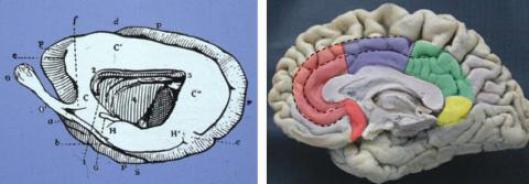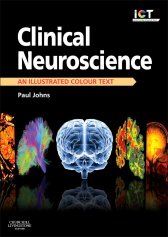
LIMBIC BRAIN
Anatomy Course (2-day)*
Sat 7th - Sun 8th September 2024
(Venue: Dissection Room, King's College London, UK)
Structural and functional neuroanatomy course - anatomy of cognition, emotion and memory - for neurology, psychiatry and neuroscience
* Includes instant access to 8 online preparatory modules
Course Overview
A more advanced structural and functional neuroanatomy course focusing on the limbic brain - presented in a very clear, logical and memorable style.
- Reviews the functional anatomy of the limbic lobe, hippocampus, amygdala, prefrontal cortex and 'limbic' loops of the basal ganglia
- Demystifies the basal forebrain, substantia innominata, 'extended amygdala', olfactory pathways and diffuse neurochemical systems
- Emphasises core limbic brain structures of central importance in clinical neurology, psychiatry and the imaging neurosciences
- Ideal revision material for the neuroscience component of the MRCPsych examination
Course director:
Dr Paul Johns, BSc BM MSc FAcadMEd FRSB FRCPath
Consultant Neuropathologist
Reader in Clinical Neuroanatomy
Two-day course: £395
(with online preparatory materials and practical anatomy sessions)
Mean participant feedback score: 4.9/5.0
Who is the course suitable for?
Anyone with an interest in the anatomical basis of emotion, cognition, memory and behaviour, including:
- neuroscientists, psychologists and imaging scientists interested in or conducting research in emotion, cognition, memory or behaviour
- NHS consultants and trainees (all grades), medical students and related healthcare professionals in psychiatry, clinical neurology / neurosciences
- Trainees in neurology, psychiatry and neurosurgery, including specialty trainees preparaing for the MRCPsych examination
Read a review
This 2-day programme developed from our popular "Neuroanatomy for Psychiatry" to include additional material suitable for a much wider audience within clinical neurology, psychiatry - and the imaging
neurosciences.
The original course has been reviewed by Dr Afsaneh Tajer (Consultant Neuropsychiatrist, National Centre for Brain Injury Rehabilitation) in the newsletter of the British Neuropsychiatry
Association (BNPA).
Course Programme
This course provides a clear and focused review of the 'limbic brain', focusing on the anatomy of cognition, behaviour, memory and emotion.
It is ideal for delegates who have already attended the Human Brain Anatomy Course - or who already have a good understanding of basic brain anatomy.
Topics include the history of the 'limbic system' concept, the limbic lobe, cingulate region (four-region model), hippocampal formation, fimbria-fornix, prefrontal cortex and
orbitofrontal region, septal area and amygdala, including the concept of the 'extended amygdala'.
The programme includes up-to-date accounts of the basal forebrain, substantia innominata, reticular formation and diffuse neurochemical systems.
It also covers the functional anatomy of the basal ganglia/ventral striatum and their relevance to neurological and neuropsychiatric diseases - including the parallel cognitive, motor
and affective loops that form the interface between thought, emotion and action.
The timetable for the August 2020 course is provided below and will take place at King's College London, Guy's Campus (see venue here).
SATURDAY
09.30 - 10.00: Registration
10.00 - 10.20: Introduction and historical overview
(origin and criticism of the visceral brain and 'limbic system' concept)
10.20 - 11.00: The limbic lobe and cingulate region
(mood, emotion, motivation and the anatomy of voluntary action)
11.00 - 11.30: Break
11.30 - 12.30: Hippocampus, entorhinal cortex and fornix
(episodic memory, spatial navigation, medial temporal lobe amnesia)
12.30 - 13.30: Lunch break
13.30 - 14.30: Prefrontal region and orbitomedial prefrontal cortex (intelligence, personality, goal-directed behaviour, frontal syndromes)
14.30 - 15.00: Break
15.00 - 16.00: Amygdala: anatomy, connections and function
(emotional expression, fear, implicit learning and anxiety disorders)
16.00 - 16.15: Questions / comments
SUNDAY
10.00 - 11.00: Insula and paralimbic cortex: topography and function (visceral, somatic, cognitive and language functions of the insula)
11.00 - 11.30: Break
11.30 - 12.30: Septal area and diffuse neurochemical systems
(reticular formation, chemical neuroanatomy and neurotropic agents)
12.30 - 13.30: Lunch break
13.30 - 14.30: Olfactory areas, basal forebrain and extended amygdala (the 'substantia innominata' and primary olfactory areas demystified)
14.30 - 15.00: Break
15.00 - 16.00: Ventral striatum and non-motor basal ganglia loops
(the anatomical interface between cognition, emotion and behaviour)
16.00 - 16.15: Concluding remarks - and Close



















